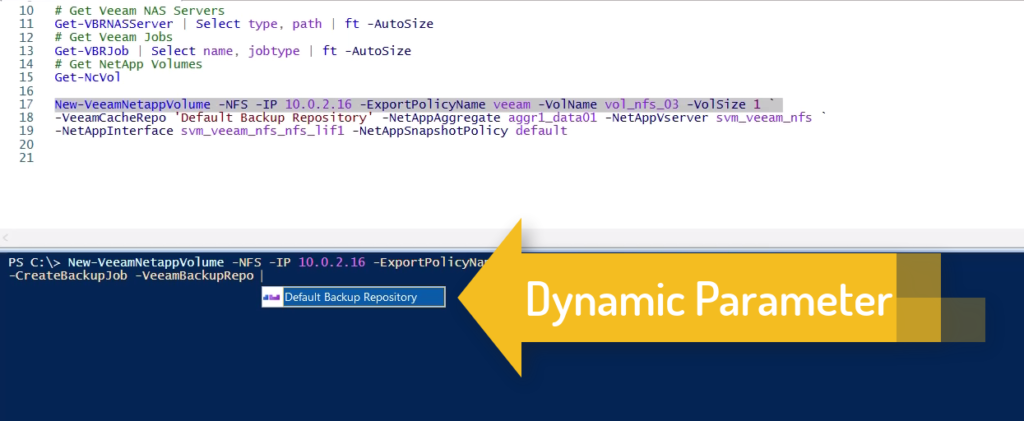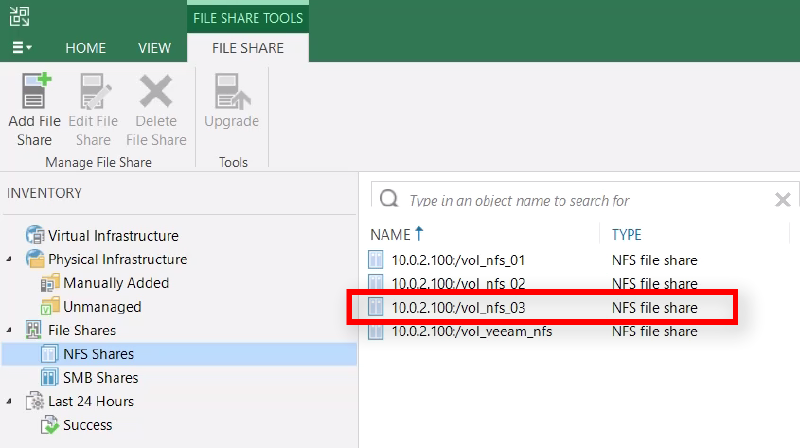1
2
3
4
5
6
7
8
9
10
11
12
13
14
15
16
17
18
19
20
21
22
23
24
25
26
27
28
29
30
31
32
33
34
35
36
37
38
39
40
41
42
43
44
45
46
47
48
49
50
51
52
53
54
55
56
57
58
59
60
61
62
63
64
65
66
67
68
69
70
71
72
73
74
75
76
77
78
79
80
81
82
83
84
85
86
87
88
89
90
91
92
93
94
95
96
97
98
99
100
101
102
103
104
105
106
107
108
109
110
111
112
113
114
115
116
117
118
119
120
121
122
123
124
125
126
127
128
129
130
131
132
133
134
135
136
137
138
139
140
141
142
143
144
145
146
147
148
149
150
151
152
153
154
155
156
157
158
159
160
161
162
163
164
165
166
167
168
169
170
171
172
173
174
175
176
177
178
179
180
181
182
183
184
185
186
187
188
189
190
191
192
193
194
195
196
197
198
199
200
201
202
203
204
205
206
207
208
209
210
211
212
213
214
215
216
217
218
219
220
221
222
223
224
225
226
227
228
229
230
231
232
233
234
235
236
237
238
239
240
241
242
243
244
245
246
247
248
249
250
251
252
253
254
255
256
257
258
259
260
261
262
263
264
265
266
267
268
269
270
271
272
273
274
275
276
277
278
279
280
281
282
283
284
285
286
287
288
289
290
291
292
293
294
295
296
297
298
299
300
301
302
303
304
305
306
307
308
309
310
311
312
313
314
|
function New-VeeamNetappVolume {
<#
.DESCRIPTION
Creates a new a NetApp Volume and adds it to Veeam Configuration as a NAS Backup Job.
.NOTES
File Name : New-VeeamNetappVolume.psm1
Author : Markus Kraus
Version : 0.3
State : Dev
.LINK
https://mycloudrevolution.com/
.EXAMPLE
New-VeeamNetappVolume -NFS -IP 10.0.2.16 -ExportPolicyName veeam -VolName vol_nfs_01 -VolSize 1 -VeeamCacheRepo 'Default Backup Repository' -NetAppAggregate aggr1_data01 -NetAppVserver svm_veeam_nfs -NetAppInterface svm_veeam_nfs_nfs_lif1 -NetAppSnapshotPolicy default
.EXAMPLE
New-VeeamNetappVolume -NFS -IP 10.0.2.16 -ExportPolicyName veeam -VolName vol_nfs_01 -VolSize 1 -CreateBackupJob -VeeamBackupRepo 'Default Backup Repository' -VeeamCacheRepo 'Default Backup Repository' -NetAppAggregate aggr1_data01 -NetAppVserver svm_veeam_nfs -NetAppInterface svm_veeam_nfs_nfs_lif1 -NetAppSnapshotPolicy default
.PARAMETER CreateBackupJob
Create a Backup Job fot the New NAS Server
.PARAMETER NFS
NFS Volume
.PARAMETER SMB
SMB Volume
.PARAMETER IP
IP for the NFS Export
.PARAMETER VolName
Name of the new Volume
.PARAMETER VolSize
Size of the new Volume in GB
.PARAMETER VeeamBackupRepo
The Veeam Backup Repo Name
.PARAMETER NetAppAggregateName
Name of the Aggregate where the Volume is created
.PARAMETER NetAppVserverName
Name of the SVM where the Volume is created
.PARAMETER NetAppInterfaceName
Name of the Interface that should be used for the mount
.PARAMETER VeeamCacheRepo
The Veeam Cache Repo Name
#>
[CmdletBinding()]
Param (
[Parameter(Mandatory=$False, ValueFromPipeline=$False, HelpMessage="Create Backup Job")]
[ValidateNotNullorEmpty()]
[Switch]$CreateBackupJob,
[Parameter(Mandatory=$True, ValueFromPipeline=$False, HelpMessage="NFS Volume", ParameterSetName="NFS")]
[ValidateNotNullorEmpty()]
[Switch]$NFS,
[Parameter(Mandatory=$True, ValueFromPipeline=$False, HelpMessage="SMB Volume", ParameterSetName="SMB")]
[ValidateNotNullorEmpty()]
[Switch]$SMB,
[Parameter(Mandatory=$True, ValueFromPipeline=$False, HelpMessage="IP for the NFS Export", ParameterSetName="NFS")]
[ValidateNotNullorEmpty()]
[ipaddress]$IP,
[Parameter(Mandatory=$True, ValueFromPipeline=$False, HelpMessage="Name of the Export Policy", ParameterSetName="NFS")]
[ValidateNotNullorEmpty()]
[String]$ExportPolicyName,
[Parameter(Mandatory=$True, ValueFromPipeline=$False, HelpMessage="Name of the new Volume")]
[ValidateNotNullorEmpty()]
[String]$VolName,
[Parameter(Mandatory=$True, ValueFromPipeline=$False, HelpMessage="Size of the new Volume in GB")]
[ValidateNotNullorEmpty()]
[int]$VolSize
)
DynamicParam {
# Verification
Test-NetappConnection
Test-VeeamConnection
# Veeam Cache Repo
$VeeamCacheRepoName = 'VeeamCacheRepo'
$VeeamCacheRepoAttributeProperty = @{
Mandatory = $true;
ValueFromPipeline = $False;
HelpMessage = 'The Veeam Cache Repo Name'
}
$VeeamCacheRepoAttribute = New-Object System.Management.Automation.ParameterAttribute -Property $VeeamCacheRepoAttributeProperty
$VeeamCacheRepoValidateSet = Get-VBRBackupRepository | Select-Object -ExpandProperty Name
$VeeamCacheRepoValidateSetAttribute = New-Object System.Management.Automation.ValidateSetAttribute($VeeamCacheRepoValidateSet)
$VeeamCacheRepoAttributeCollection = New-Object System.Collections.ObjectModel.Collection[System.Attribute]
$VeeamCacheRepoAttributeCollection.Add($VeeamCacheRepoAttribute)
$VeeamCacheRepoAttributeCollection.Add($VeeamCacheRepoValidateSetAttribute)
$VeeamCacheRepoRuntimeParameter = New-Object System.Management.Automation.RuntimeDefinedParameter($VeeamCacheRepoName, [string], $VeeamCacheRepoAttributeCollection)
# Veeam Backup Repo
$VeeamBackupRepoName = 'VeeamBackupRepo'
$VeeamBackupRepoAttributeProperty = @{
Mandatory = $false;
ValueFromPipeline = $False;
HelpMessage = 'The Veeam Backup Repo Name'
}
$VeeamBackupRepoAttribute = New-Object System.Management.Automation.ParameterAttribute -Property $VeeamBackupRepoAttributeProperty
$VeeamBackupRepoValidateSet = Get-VBRBackupRepository | Select-Object -ExpandProperty Name
$VeeamBackupRepoValidateSetAttribute = New-Object System.Management.Automation.ValidateSetAttribute($VeeamBackupRepoValidateSet)
$VeeamBackupRepoAttributeCollection = New-Object System.Collections.ObjectModel.Collection[System.Attribute]
$VeeamBackupRepoAttributeCollection.Add($VeeamBackupRepoAttribute)
$VeeamBackupRepoAttributeCollection.Add($VeeamBackupRepoValidateSetAttribute)
$VeeamBackupRepoRuntimeParameter = New-Object System.Management.Automation.RuntimeDefinedParameter($VeeamBackupRepoName, [string], $VeeamBackupRepoAttributeCollection)
# NetApp vServer parameter
$NetAppVserverName = 'NetAppVserver'
$NetAppVserverAttributeProperty = @{
Mandatory = $true;
ValueFromPipeline = $False;
HelpMessage = 'The NetApp Vserver Name'
}
$NetAppVserverAttribute = New-Object System.Management.Automation.ParameterAttribute -Property $NetAppVserverAttributeProperty
$NetAppVserverValidateSet = (Get-NcVserver).where({$_.VserverType -eq "data"}) | Select-Object -ExpandProperty Vserver
$NetAppVserverValidateSetAttribute = New-Object System.Management.Automation.ValidateSetAttribute($NetAppVserverValidateSet)
$NetAppVserverAttributeCollection = New-Object System.Collections.ObjectModel.Collection[System.Attribute]
$NetAppVserverAttributeCollection.Add($NetAppVserverAttribute)
$NetAppVserverAttributeCollection.Add($NetAppVserverValidateSetAttribute)
$NetAppVserverRuntimeParameter = New-Object System.Management.Automation.RuntimeDefinedParameter($NetAppVserverName, [string], $NetAppVserverAttributeCollection)
# NetApp Aggregate parameter
$NetAppAggregateName = 'NetAppAggregate'
$NetAppAggregateAttributeProperty = @{
Mandatory = $true;
ValueFromPipeline = $False;
HelpMessage = 'The NetApp Aggregate Name'
}
$NetAppAggregateAttribute = New-Object System.Management.Automation.ParameterAttribute -Property $NetAppAggregateAttributeProperty
$NetAppAggregateValidateSet = Get-NcAggr | Select-Object -ExpandProperty Name
$NetAppAggregateValidateSetAttribute = New-Object System.Management.Automation.ValidateSetAttribute($NetAppAggregateValidateSet)
$NetAppAggregateAttributeCollection = New-Object System.Collections.ObjectModel.Collection[System.Attribute]
$NetAppAggregateAttributeCollection.Add($NetAppAggregateAttribute)
$NetAppAggregateAttributeCollection.Add($NetAppAggregateValidateSetAttribute)
$NetAppAggregateRuntimeParameter = New-Object System.Management.Automation.RuntimeDefinedParameter($NetAppAggregateName, [string], $NetAppAggregateAttributeCollection)
# NetApp Interface parameter
$NetAppInterfaceName = 'NetAppInterface'
$NetAppInterfaceAttributeProperty = @{
Mandatory = $true;
ValueFromPipeline = $False;
HelpMessage = 'The NetApp Interface Name'
}
$NetAppInterfaceAttribute = New-Object System.Management.Automation.ParameterAttribute -Property $NetAppInterfaceAttributeProperty
$NetAppInterfaceValidateSet = (Get-NcNetInterface).where({$_.DataProtocols -match "nfs|cifs"}) | Select-Object -ExpandProperty InterfaceName
$NetAppInterfaceValidateSetAttribute = New-Object System.Management.Automation.ValidateSetAttribute($NetAppInterfaceValidateSet)
$NetAppInterfaceAttributeCollection = New-Object System.Collections.ObjectModel.Collection[System.Attribute]
$NetAppInterfaceAttributeCollection.Add($NetAppInterfaceAttribute)
$NetAppInterfaceAttributeCollection.Add($NetAppInterfaceValidateSetAttribute)
$NetAppInterfaceRuntimeParameter = New-Object System.Management.Automation.RuntimeDefinedParameter($NetAppInterfaceName, [string], $NetAppInterfaceAttributeCollection)
# NetApp SnapShot Policy parameter
$NetAppSnapshotPolicyName = 'NetAppSnapshotPolicy'
$NetAppSnapshotPolicyAttributeProperty = @{
Mandatory = $true;
ValueFromPipeline = $False;
HelpMessage = 'The NetApp Aggregate Name'
}
$NetAppSnapshotPolicyAttribute = New-Object System.Management.Automation.ParameterAttribute -Property $NetAppSnapshotPolicyAttributeProperty
$NetAppSnapshotPolicyValidateSet = (Get-NcSnapshotPolicy).where({$_.Enabled -eq "True"}) | Select-Object -ExpandProperty Policy
$NetAppSnapshotPolicyValidateSetAttribute = New-Object System.Management.Automation.ValidateSetAttribute($NetAppSnapshotPolicyValidateSet)
$NetAppSnapshotPolicyAttributeCollection = New-Object System.Collections.ObjectModel.Collection[System.Attribute]
$NetAppSnapshotPolicyAttributeCollection.Add($NetAppSnapshotPolicyAttribute)
$NetAppSnapshotPolicyAttributeCollection.Add($NetAppSnapshotPolicyValidateSetAttribute)
$NetAppSnapshotPolicyRuntimeParameter = New-Object System.Management.Automation.RuntimeDefinedParameter($NetAppSnapshotPolicyName, [string], $NetAppSnapshotPolicyAttributeCollection)
# Create and return parameter dictionary
$RuntimeParameterDictionary = New-Object System.Management.Automation.RuntimeDefinedParameterDictionary
$RuntimeParameterDictionary.Add($VeeamCacheRepoName, $VeeamCacheRepoRuntimeParameter)
if ($CreateBackupJob){
$RuntimeParameterDictionary.Add($VeeamBackupRepoName, $VeeamBackupRepoRuntimeParameter)
}
$RuntimeParameterDictionary.Add($NetAppAggregateName, $NetAppAggregateRuntimeParameter)
$RuntimeParameterDictionary.Add($NetAppVserverName, $NetAppVserverRuntimeParameter)
$RuntimeParameterDictionary.Add($NetAppInterfaceName, $NetAppInterfaceRuntimeParameter)
$RuntimeParameterDictionary.Add($NetAppSnapshotPolicyName, $NetAppSnapshotPolicyRuntimeParameter)
$RuntimeParameterDictionary
}
Begin {
# Assign DynamicParams to actual variables
$VeeamCacheRepoName = $PsBoundParameters[$VeeamCacheRepoName]
if ($VeeamBackupRepoName){
$VeeamBackupRepoName = $PsBoundParameters[$VeeamBackupRepoName]
}
$NetAppAggregateName = $PsBoundParameters[$NetAppAggregateName]
$NetAppVserverName = $PsBoundParameters[$NetAppVserverName]
$NetAppInterfaceName = $PsBoundParameters[$NetAppInterfaceName]
$NetAppSnapshotPolicyName = $PsBoundParameters[$NetAppSnapshotPolicyName]
# Get real objects from parameters
try {
$VeeamCacheRepo = Get-VBRBackupRepository -Name $VeeamCacheRepoName
}catch{ Throw "Failed to get Veeam Cache Repo" }
if ($VeeamBackupRepoName){
try {
$VeeamBackupRepo = Get-VBRBackupRepository -Name $VeeamBackupRepoName
}catch{ Throw "Failed to get Veeam Backup Repo" }
}
try {
$NetAppAggr = Get-NcAggr -Name $NetAppAggregateName
}catch{ Throw "Failed to get NetApp Aggr" }
try {
$NetAppVserver = Get-NcVserver -Name $NetAppVserverName
}catch{ Throw "Failed to get NetApp vServer (SVM)" }
try {
$NetAppInterface = Get-NcNetInterface -Name $NetAppInterfaceName
}catch{ Throw "Failed to get NetApp Interface)" }
try {
$NetAppSnapshotPolicy = Get-NcSnapshotPolicy -Name $NetAppSnapshotPolicyName
}catch{ Throw "Failed to get NetApp Snapshot Policy)" }
if ($DebugPreference -eq "Inquire") {
"NetApp Aggregate:"
$NetAppAggr | Format-Table -Autosize
"NetApp Vserver (SVM):"
$NetAppVserver | Format-Table -Autosize
"NetApp Interface:"
$NetAppInterface | Format-Table -Autosize
"NetApp Snapshot Policy:"
$NetAppSnapshotPolicy | Format-Table -Autosize
}
$VolSizeByte = $VolSize * 130023424
}
Process {
if ($NFS) {
$ClientMatch = $IP
if(!($NetAppExportPolicy = Get-NcExportPolicy -Name $ExportPolicyName -VserverContext $NetAppVserver )){
"Create new NetApp Export Policy '$($ExportPolicyName)' on SVM '$($NetAppVserver.Name)' ..."
$NetAppExportPolicy = New-NcExportPolicy -Name $ExportPolicyName -VserverContext $NetAppVserver
$NetAppExportRule = New-NcExportRule -VserverContext $NetAppVserver -Policy $NetAppExportPolicy.PolicyName -ClientMatch $ClientMatch `
-Protocol NFS -Index 1 -SuperUserSecurityFlavor any -ReadOnlySecurityFlavor any -ReadWriteSecurityFlavor any
}else{
"NetApp Export Policy '$($ExportPolicyName)' on SVM '$($NetAppVserver.Name)' aleady exists, add IP"
$NetAppExportRule = New-NcExportRule -VserverContext $NetAppVserver -Policy $NetAppExportPolicy.PolicyName -ClientMatch $ClientMatch `
-Protocol NFS -Index 1 -SuperUserSecurityFlavor any -ReadOnlySecurityFlavor any -ReadWriteSecurityFlavor any
}
"Create new NetApp Volume '$VolName' on Aggregate '$($NetAppAggr.AggregateName)' ..."
$NetAppVolume = New-NcVol -VserverContext $NetAppVserver -Name $VolName -Aggregate $NetAppAggr.AggregateName -JunctionPath $("/" + $VolName) `
-ExportPolicy $ExportPolicyName -Size $VolSizeByte -SnapshotReserve 20 -SnapshotPolicy $NetAppSnapshotPolicy.Policy
"Set Advanced Options for NetApp Volume '$VolName' ..."
$NetAppVolume | Set-NcVolOption -Key fractional_reserve -Value 0
$NetAppVolume | Set-NcVolOption -Key guarantee -Value none
"Add New Veeam NAS Server '$($NetAppInterface.Address):/$($VolName)'"
$VBRNAServer = Add-VBRNASNFSServer -Path "$($NetAppInterface.Address):/$($VolName)" -CacheRepository $VeeamCacheRepo
}
elseif ($SMB) {
"Not Implemented. Sorry..."
}
else { Throw "No Volume Type choosen!"}
if ($CreateBackupJob) {
if ($NFS) {
$Object = New-VBRNASBackupJobObject -Server $VBRNAServer -Path $VBRNAServer.Path
}
elseif ($SMB) {
"Not Implemented. Sorry..."
}
"Add Veeam Backup Job for NetApp Volume '$VolName' ..."
$VBRNAServerBackupJob = Add-VBRNASBackupJob -BackupObject $Object -ShortTermBackupRepository $VeeamBackupRepo
}
}
}
|




